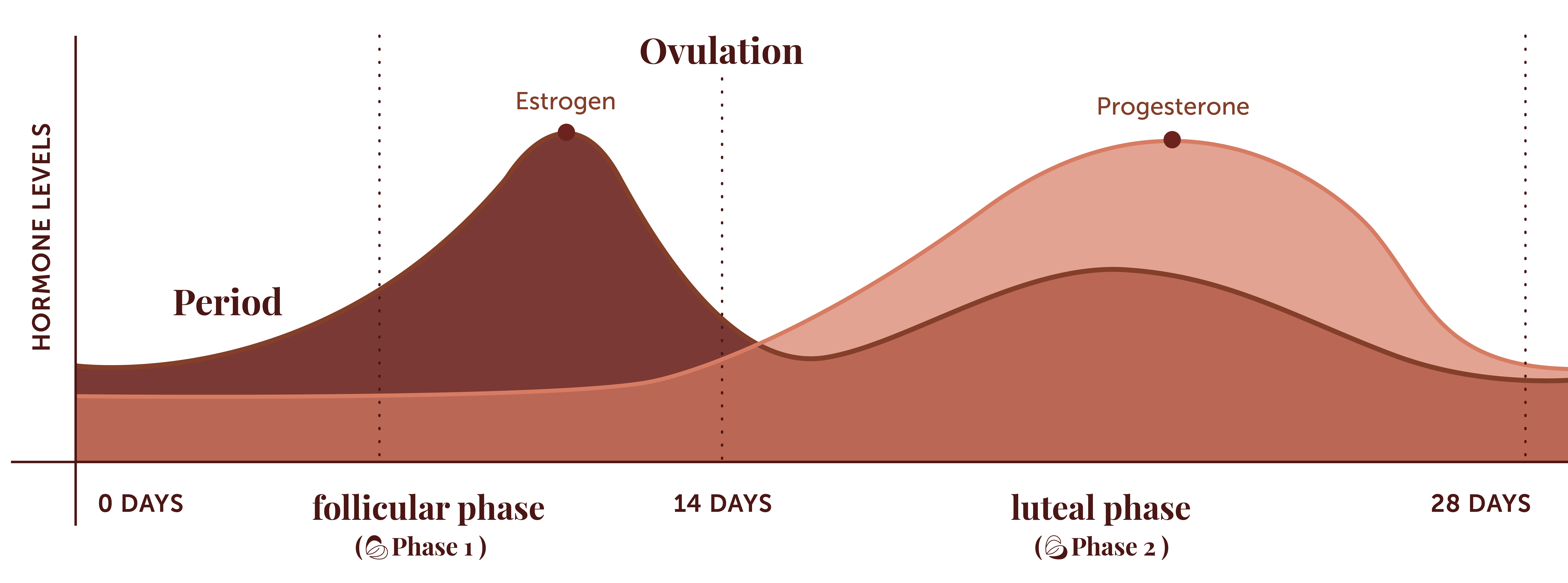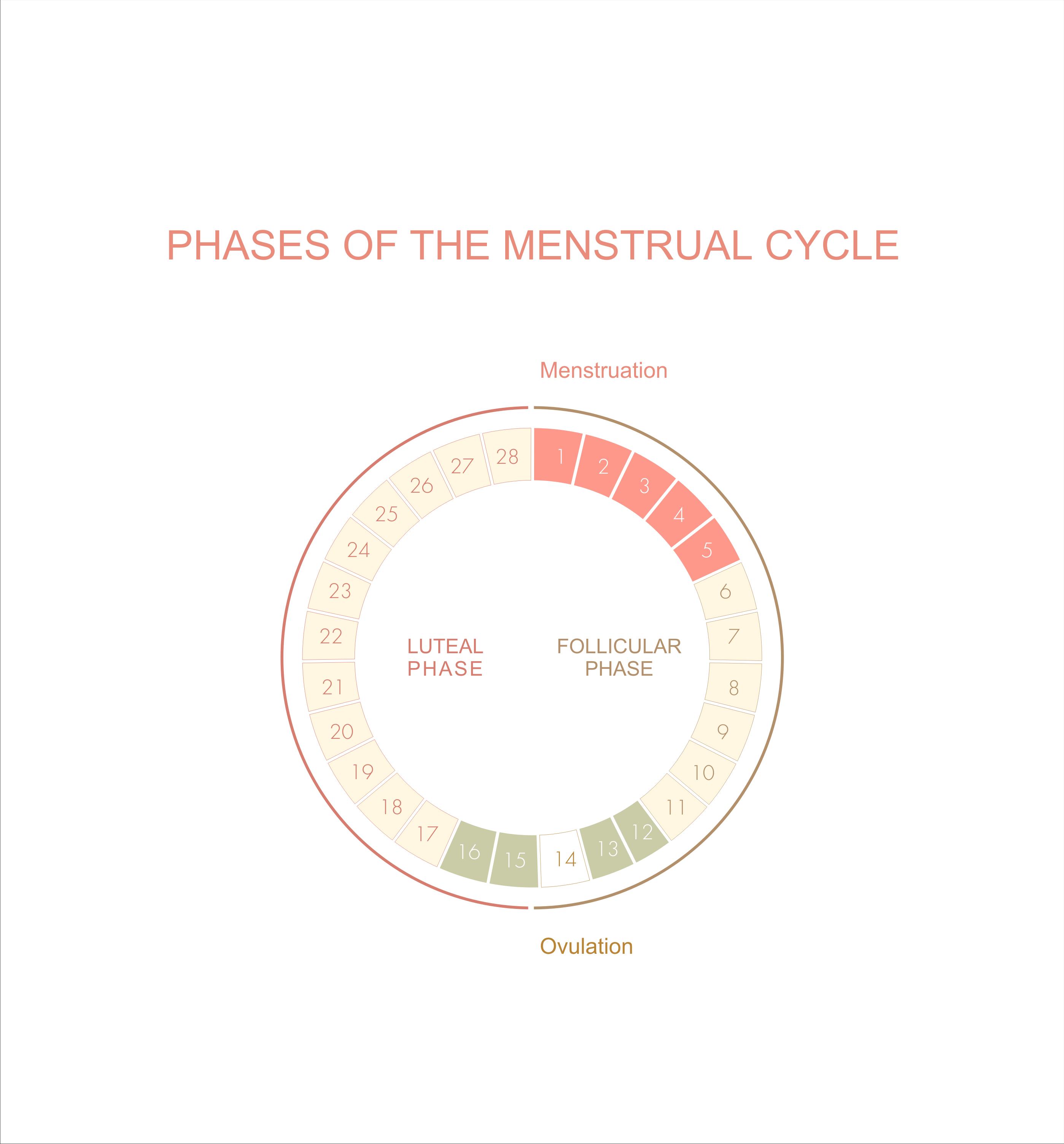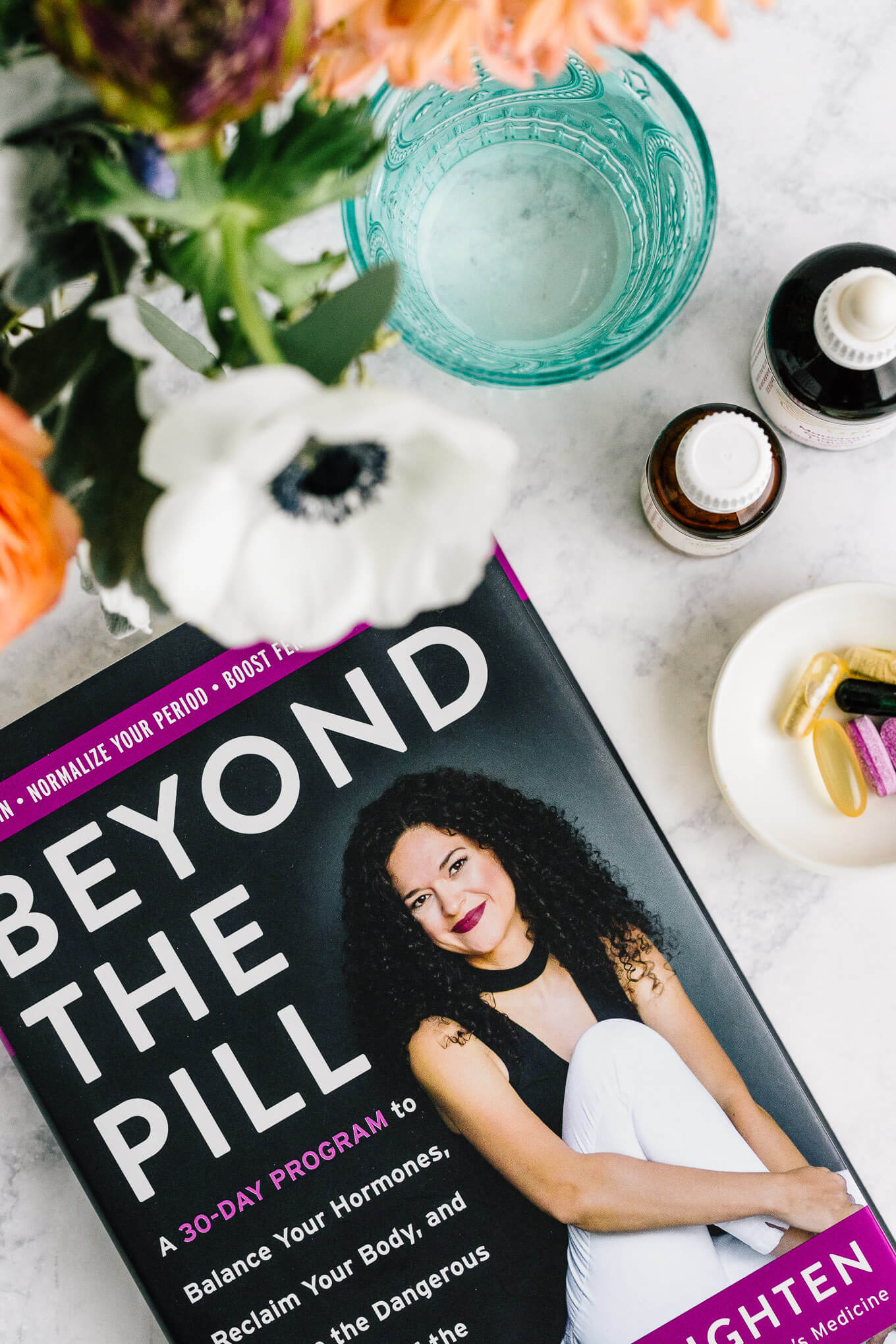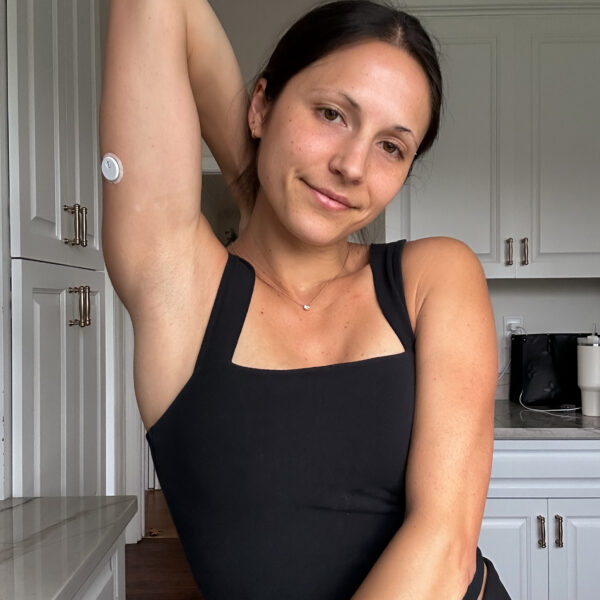Your guide to understanding the four stages of your menstrual cycle — menstruation, follicular, ovulation and luteal phase. No matter your age or if you’re planning for pregnancy or not, it’s important to understand your menstrual cycle, what’s a normal length and why yours may be irregular.
 As women, we have about 400 menstrual cycles in our lifetime. Yet many women go about their lives never fully understanding its importance or even what’s really going on throughout their monthly cycle. Like did you know there were four phases of the menstrual cycle?
As women, we have about 400 menstrual cycles in our lifetime. Yet many women go about their lives never fully understanding its importance or even what’s really going on throughout their monthly cycle. Like did you know there were four phases of the menstrual cycle?
Maybe you grew up thinking periods were annoying, incredibly painful or even a taboo topic. I know my 4th grade sex ed really just made for an uncomfortable night with our moms and peers, only to be later teased about by the stinky, mid-pubescent boys. No one really sat me down and explained the ins and outs of the menstrual cycle and how incredible it is.
So let’s change that. Our menstrual cycles are one of the most important signs we have as women about our health. Because of this, it’s recognized in medicine as our 6th vital sign and one of the most powerful indicators of the state of our health and well-being. Knowledge is power. So let’s get to know your menstrual cycle and it’s four phases.

What are the four phases of the menstrual cycle?
It’s a common belief that your menstrual cycle just refers to the time you’re bleeding, when actually there’s so much more to it. Your menstrual cycle can be split into four distinct phases.
-
- Menstruation
- Follicular
- Ovulation
- Luteal
Each of these menstrual cycle phases serve an important purpose in preparing the body for pregnancy. Even if you’re not looking to get pregnant, the monthly hormone fluctuations are important for maintaining optimal health.
Phase 1 — Menstrual Phase
This phase starts day one of your cycle or the first day you start to bleed. On average your menstrual cycle should last between 3 and 7 days.
This phase begins because an egg from the previous cycle wasn’t fertilized. Since pregnancy hasn’t taken place, levels of the hormones estrogen and progesterone drop. The thickened lining of your uterus, which would support a pregnancy, is no longer needed and sheds. You release the tissue from your uterus, along with blood and mucus —aka your period. Think of it as your body’s way of giving you a fresh start to try again the next month.
During these days, you are losing blood and prostaglandins (the hormone that causes cramping!) are at their highest. Your key sex hormones, estrogen, progesterone and testosterone (yes, ladies have and need testosterone), are at the lowest they will be in your entire cycle.
Phase 2 — The Follicular Phase
The follicular phase starts on the first day of your period and ends when you ovulate. It lasts about 13 days, including the days you are bleeding. However, the is the most variable phase in terms of length. You may have a slightly shorter follicular phase or a much longer one depending on your natural rhythm and hormone health.
During this phase your body is working hard preparing an egg to be released at ovulation. It starts with the pituitary gland in your brain releasing a hormone called follicle stimulating hormone (FSH). This hormone stimulates the follicles in your ovaries to mature. Once matured the strongest follicle releases the egg during ovulation. The rest of the follicles are reabsorbed into your body. The maturing follicle sets off a surge in estrogen that thickens the lining of your uterus. This creates a nutrient-rich environment for an embryo to grow.
Phase 3 — The Ovulatory Phase
Ovulation is when your ovary releases a mature egg. This phase typically occurs around the middle of your cycle, usually on day 14 of your cycle. But this isn’t always the case. It may occur later depending on your cycle length. It lasts 2-5 days.
High levels of estrogen levels during the follicular phase trigger the pituitary gland to release luteinizing hormone (LH). This is what starts the process of ovulation. When LH peaks, it stimulates the release of an egg from its follicle in your ovary. Ovulation happens about 12 hours after the LH peak and the egg that’s released will survive for 12-24 hours. During this time it travels down the fallopian tube toward the uterus in hopes to be fertilized by sperm.
Immediately following the release of the egg, progesterone starts to rise, peaking 5-7 days after ovulation. Estrogen and testosterone slowly start to decline.
Phase 4 — The Luteal Phase
The luteal phase of your menstrual cycle lasts about anywhere between11-17 days. Although the average length is 14 days. Hense the “two week wait” to find out if you’re pregnant. This phase prepares your uterus for either your period or pregnancy. Anything less than 11 days is considered a short luteal phase which can causes issues with getting pregnant.
After the follicle releases its egg, it changes into the corpus luteum. This temporary organ releases hormones, mainly progesterone and some estrogen. Progesterone and a second rise in estrogen keeps your uterine lining thick and ready for a fertilized egg to implant. This also means a bit of a hormonal roller coaster.
If an egg is fertilized and implants into the uterus, congrats!! You’re pregnant. Your body will produce human chorionic gonadotropin (hCG). This is the hormone that gives you the two pink lines on a pregnancy test. Its job is to maintain the corpus luteum and keeps the uterine lining thick.
If you don’t get pregnant, the corpus luteum will disintegrates. This leads to a drop in both estrogen and progesterone, causing the onset of your next period. The uterine lining that was built up during the last two weeks will shed — aka your period bleed.

WHAT IS THE AVERAGE LENGTH OF THE MENSTRUAL CYCLE?
Textbooks say 28 days. But it really depends. Every individual is unique. On average, a healthy cycle looks like 28-30 days with bleeding lasting approximately five days. However, your menstrual flow may occur every 21 to 35 days and last 3-7 days. For the first few years after menstruation begins, long cycles are common.
To determine the length of your menstrual cycle, keep track from the first day of your period to the day before your next period starts.
Identifying common issues
Every menstrual cycle is different. Some people get their period at the same time each month. Others are more irregular. Some bleed more heavily or for a longer number of days than others.
One way to find out if you’re having any issues with your menstrual cycle is to track your periods. Write down when they start and end. Also record any changes to the amount or number of days you bleed, and whether you have spotting between periods
Signs your menstrual cycle is irregular?
While every women’s cycle is unique, here are a few signs of a problem with your menstrual cycle:
-
- You’ve skipped periods, or your periods have stopped entirely.
- Your periods are irregular.
- You bleed for more than 7 days.
- Your periods are less than 21 days or more than 35 days apart.
- You bleed between periods (heavier than spotting).
WHY IS MY MENSTRUAL CYCLE IRREGULAR?
Keep in mine every woman’s menstrual cycle is different. Some women get their period at the same time each month. Other women have cycles that are more irregular. Some women bleed more heavily or for a longer number of days than others.
Your menstrual cycle can also change during certain times of your life. Stress, travel (especially across time zones) pregnancies, breastfeeding, nutrition, age, etc. can alter your normal. That said, it’s really helpful to track your periods. Once you know your rhythm it’s easier to notice if your body is signaling something is off. Remember, your menstrual cycle is your sixth vial sign!
Any of these things can alter your menstrual cycle:
-
- Birth control – The birth control pill may make your periods shorter and lighter. While on some pills, you won’t get a period at all. You may also have a missing period or period problems post pill (you can read my story here!).
- Pregnancy – Your periods will stop during pregnancy. Missed periods are one of the most obvious first signs that you’re pregnant. Post-pregnancy your period may be different than your typically normal. Most women’s period return about 6-8 weeks after giving birth, if you aren’t breastfeeding.
- Breastfeeding – Due to high levels of prolactin, your period may go missing until you wean. High levels of prolactin can suppress ovulation. This along with stress can alter a woman’s cycle. Women who exclusively breastfeed may not have a period the entire time they breastfeed, or it may come back 3-6 months postpartum.
- Polycystic ovary syndrome (PCOS) – This hormonal imbalance prevents an egg from developing normally in the ovaries. PCOS causes irregular menstrual cycles and missed periods.
- Uterine fibroids – These noncancerous growths in your uterus can make your periods longer and heavier than usual.
- Eating disorders – Anorexia, bulimia, and other eating disorders can disrupt your menstrual cycle and make your periods stop.

Resources for a better Period:
- Seed Cycling for Hormone Balance
- Cycle Syncing: What to Eat and Drink in Each Phase of Your Cycle (coming soon!)
- Hormone Intelligence
- Woman’s Code
- Beyond the Pill
NEED MORE GUIDANCE?
Hormone balance is complex since there are so many factors that play into this delicate balance. It’s important to work with a doctor to test your hormone levels and properly diagnose your condition. Once you have this information a dietitian can help make diet and lifestyle changes to help you balance and maintain optimal hormone levels.




[…] The Four Phases of Your Menstrual Cycle […]